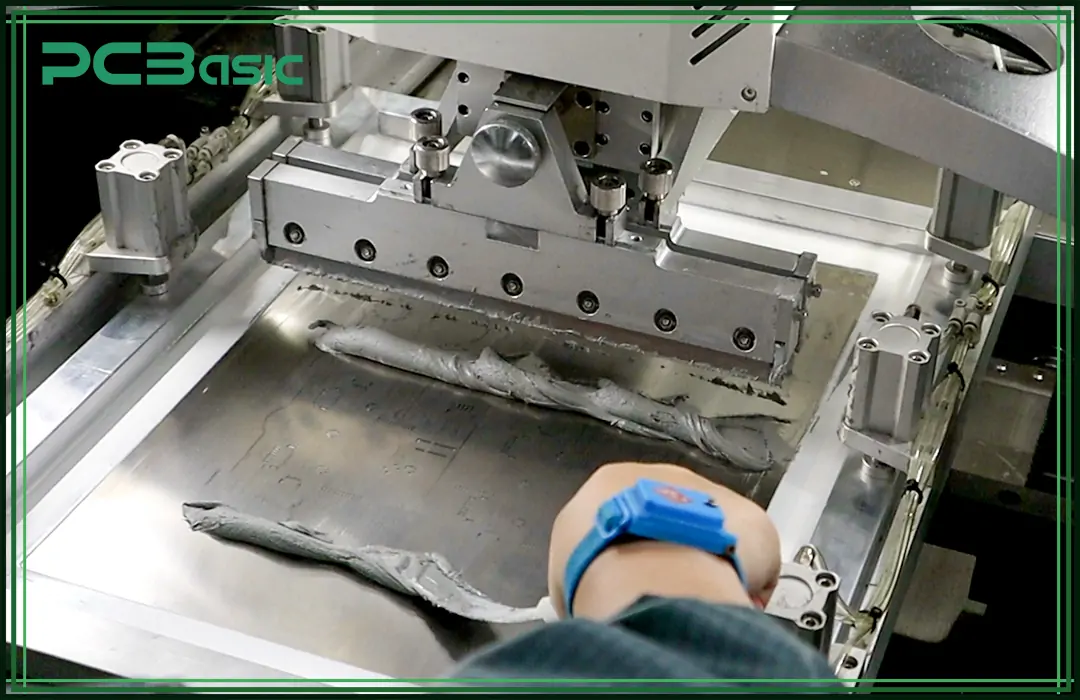Global high-mix volume high-speed Shenzhen PCBA manufacturer

Ru
9:00 -18:00, Mon. - Fri. (GMT+8)
9:00 -12:00, Sat. (GMT+8)
(Except Chinese public holidays)





Global high-mix volume high-speed Shenzhen PCBA manufacturer

Ru
9:00 -18:00, Mon. - Fri. (GMT+8)
9:00 -12:00, Sat. (GMT+8)
(Except Chinese public holidays)





HomePage > Blog > Knowledge Base > What Is Solder Paste Used For and How To Use It?
Soldering is an important step in circuit board assembly, which connects various components to the circuit board. In the process, we usually use a variety of soldering materials to ensure the efficiency of joining, such as soldering paste, solder wire and flux. Among them, soldering paste plays an important role in surface mounting technology (SMT).
So, what exactly is soldering paste? What is solder paste used for? And how to use solder paste? How does it differ from solder paste vs flux and solder paste vs solder wire? Let's explore these issues in this blog to help you better understand the importance of solder paste for electronics in modern electronics.
Then what is soldering paste, afterall? Where is solder paste used? And how to use solder paste? This is different than solder paste vs flux and solder paste vs solder wire, how? Few of these questions were addressed in this blog that can help you understand the significance of solder paste for electronics that forms a crucial part of modern day electronics.

Soldering paste, also called solder paste, is a gray, sticky substance. It is a mixture of metal solder powder and flux, mainly used in surface mount assembly as an adhesive and solder that can connect electronic components to the PCB. During reflow soldering, the solder paste melts and forms solid electrical connections between the component leads and the board.
“What is solder paste?” is really important in mass production because it automates component placement and soldering while improving the accurateness and efficiency rates. Solder is a general term for any filler metal used to join pieces of solder paste, but we need to know how to apply solder paste correctly to ensure the quality of solder joints in all electronic components production processes.
Solder paste types can be classified in a variety of ways. We can divide it into different types according to the composition, application, and soldering process:
By solder alloy
According to solder alloys, solder paste is mainly divided into two categories: lead-based solder paste and lead-free solder paste.
Traditional solder pastes usually contain tin and lead, which have a low melting point and are often used in electronics manufacturing where environmental standards are not required.
Common lead-free solder paste alloys include tin, silver, copper, etc., with a slightly higher melting point than lead-based solder paste. Compared to traditional solder paste, lead-free solder paste is more environmentally friendly and suitable for RoHS-compliant products.
By flux type
According to different flux, soldering paste can be classified in four types: RMA (Rosin Mildly Activated) Solder Paste, RA (Rosin Activated) Solder Paste, Water-soluble Solder Paste and No-Clean Solder Paste.
By melting point
According to the melting point of the solder paste, we can divide it into three categories: low, medium and high-temperature solder paste.
Low-temperature solder paste: has a melting point of about 138°C. It is suitable for heat-sensitive components or materials and low-temperature soldering.
Medium-temperature solder paste: is the most common type. The melting point of lead-based solder paste is about 183°C, and lead-free solder paste is between 217 and 221°C, which is widely used in standard electronic assembly.
High-temperature solder paste: has a higher melting point and is suitable for use in high-temperature environments, usually for special applications that require high-temperature resistance.
By particle size
Solder particles in solder paste can be divided into different grades according to size, such as Type 3, Type 4, Type 5 and so on. The smaller the particle, the better for fine-pitch application, such as the soldering of microchips or high-density circuit boards.
By application
According to solder paste’s different applications, it can also be divided into general-purpose solder paste, precision solder paste and special process solder paste.

“What is solder paste used for” plays a key role in electronic manufacturing, ensuring reliable connections between components and the PCB. Here are some primary applications:
Applying the solder paste to the pads of the PCB where the electronic components will be placed. The solder paste can temporarily hold the components in place before soldering, preventing them from moving.
During reflow soldering, the PCB is heated in a reflow oven. The solder paste melts and forms solid connections between the component leads and PCB pads. This process is ideal for mass production and is the most efficient method to utilize solder paste for electronics.
Solder paste can also be used to repair or rework existing circuit boards. When the existing circuit board needs to be replaced or added more components, we can remelt the solder paste to complete the new soldering.
The flux in the solder paste can remove oxides from the metal surface when heated, helping the solder paste flow and adhere better, ensuring solder joint quality.
Solder paste for electronics enables automated soldering, making it essential for high-speed electronic production lines. It allows multiple components to be soldered in a single process, greatly improving efficiency. The wide application of solder paste for electronics in automated assembly lines significantly enhances production rates and quality.
Overall, solder paste is an indispensable material in the manufacturing process of modern electronic devices, helping to form efficient and reliable electrical connections. From consumer electronics to industrial equipment, solder paste plays an important role.

Here’s a step-by-step guide on how to use solder paste effectively. Following these steps, with precise operation and proper tools, we can successfully use solder paste to solder the SMT components to PCBs.
Before soldering, prepare the required materials and tools, including solder paste, stencil, printing equipment or manual coating tools and so on.
In order to ensure soldering accuracy and efficiency, we need to clean the circuit board before applying the solder paste, ensuring that the pad is free of oxides and impurities
Apply the solder paste to the pad of the circuit board through the stencil or screen press to ensure that the solder paste on each pad is appropriate and even.
After applying the solder paste, the electronic components are precisely placed on the PCB using a pick-and-place machine or manually.
After the component is mounted, the circuit board will be placed in the reflow oven. The solder paste will be melted by heating, and the pins of the components are solidly soldered together with the pad. After cooling, the solder solidifies to form solid solder joints.
After the soldering, inspect the quality of the solder joints to ensure that they are intact and secure.
Through the steps above, solder paste can help achieve efficient and accurate soldering.
These materials are essential in the soldering process, but they serve different purposes:
|
Aspect |
Solder Paste |
Solder Wire |
Flux |
|
Form |
Thick paste of solder particles in flux |
Solid wire, often with flux core |
Liquid, paste, or solid chemical agent |
|
Primary Use |
Surface mount technology (SMT) |
Through-hole and hand-soldering |
Surface preparation and cleaning |
|
Soldering Method |
Reflow soldering |
Hand-soldering or wave soldering |
Applied alongside solder paste to clean surfaces |
|
Advantages |
Ideal for high-volume, automated production |
Simple and versatile for manual soldering |
Improves solderability and joint quality |
|
Disadvantages |
Requires precise equipment, limited shelf life |
Not suited for fine-pitch SMT work |
May require post-solder cleaning |
Solder paste is an important material in modern electronic manufacturing, especially in SMT. It simplifies and speeds up the soldering process by combining solder particles with flux, making it ideal for automated assembly and precision rework. With a comprehensive understanding of what solder paste is, how to use solder paste, and its differences from solder paste vs solder wire and solder paste vs flux, you can improve the quality and efficiency of electronic product assembly.
Whether you're working in large-scale electronics manufacturing or small-scale PCB assembly, mastering solder paste types will enhance your production capabilities and ensure reliable, long-lasting connections. Understanding what solder paste is used for and its effective application will ultimately lead to better electronic product quality and durability.

Assembly Enquiry
Instant Quote